Visit A Dental Office Japan has some information of your finest dentist in Japan
以下をご確認下さいクッキーについての同意並び欧州居住者向けプライバシーポリシー
Nakayama Hokekyo-ji, The Grand Head Temple Of Nichiren
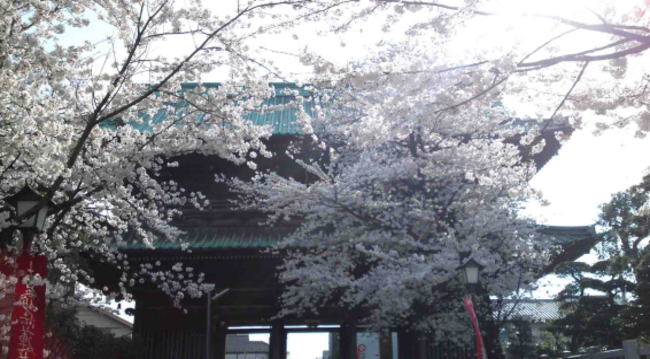
The Grand Head Temple of Nichiren Sect, Hokekyo-ji was started in Kamakura period in the Middle Ages of 13th century, with many legends of the founder Nichren.
Nakayama was his peaceful place when Nichren involved in some troubles with the Government at Kamakura, and also Nichren preached at. The Kishibojin-do which dedicates the stutue of Kishibojin (the goddess of taking care of children) carved by Nichiren himself is worshipped very popular and is called as one of Edo Three Grand Kishibojin. Thousands of people visit and bless of safe delivery of a baby, healthy child rearing, curing disease, and rising prosperity of a company's fate.
Nakayama Hokekyo-ji Temple is the central training center of the incantations of Nichiren Sect. From November 1st to February 10th, it holds the 100 days severe practice in cold weather every year. It is known one of the severest religious practice in Japan.
Hokekyouji-Temple preserves the national treasures, they are very important historical properties on the Buddhism in Japan. They are the two masterpieces, 'Rissho-ankoku-ron' and 'Kanjin-honzon-sho' written by the founder Nichiren himself. And the four architectures, the Goju-no-to (the five-story pagoda)built in Edo period, the Hokke-do hall built in Kamakura period, the Soshi-do hall and the Yon-soku-mon gate built in Muromachi period are designated by the National Government as the important cultural properties. There are many other cultural properties like the framed-calligraphies by Koetsu Honami, the biggest Daibutsu in Chiba prefecture and so on.
There are some events held in Hokekyo-ji Temple. In Spring, the cherry blossomes blooming there look excitingly beautiful.
In addition, visitors enjoy walikng in the site of Hokekyoji Temple without any charges. It is a very clever choice to visit this temple as your final stop before leaving Japan because it is on your way to Narita International Airport from Tokyo or throughout Japan.
Why don't you visit Nakayama Hokekyoji Temple?
Accessibility To Nakayama Hokekyo-ji Temple
- Nakayama Hokekyouji-Temple has a great accessibility from both Narita and Haneda International Airport.
- From Narita International Airport, take Keisei-line and get off Keisei-Nakayama Sta, take minimally 40 minutes from Narita Airport.. And also take JR Sobu-exoress line, transfer the line at Funabashi to Sobu-Local line, get off Shimousa-Nakayama Sta.
- From Haneda International Airport, take Keikyu-line bound to Narita, and get off Keisei-Nakayama Sta.
- From Tokyo Sta, take Sobu-Express line bound to Chiba or Narita, transfer the line to Sobu-Local line bound to Chiba, Tsudanuma, or Nishi-Funabashi at Ichikawa Sta, get off Shimousa-Nakayama Sta.
- From Akihabara Sta, take Sobu line bound to Chiba, get off Shimousa-Nakayama Sta.
- Take 1 minute walk from Keisei-Nakayama Sta, and take 5 minutes walk from Shimousa-Nakayama Sta.
Four Seasons In Nakayama Hokekyo-ji Temple / The Annual Events
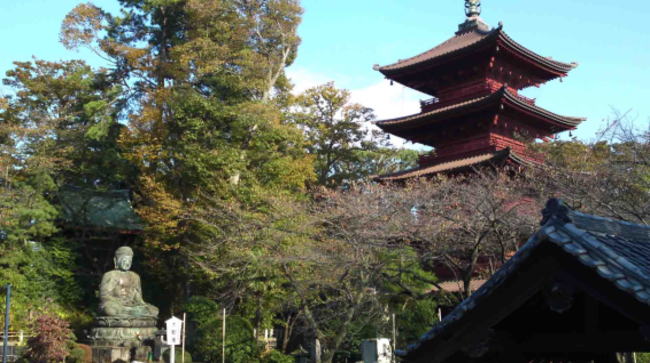
The Annual Events In Hokekyo-ji Temple
The Annual Events In Hokekyo-Ji Temple where dedicates the statue of Kishibo-jin curved by the founder Nichren
- 8,18,28 on every month
- The festival day of Kishibojin (the goddess of kids)
- 18 on every month
- Monthly sermon
- Jan 1st-3rd
- The New Year's prayer service
- Jan 8th,18th,28th
- the grand festival for taking care of children
- The Setsubun-day
on Feb - The Setsubun as Star Festival / the Bean Throwing Festival
- Feb 10th
- Dai-aragyo-mangyoe, the celebration for the priests having accomplished the 100 days severe practice
- the vernal equinox day
- Higan-no-Segaki-e, the letters means hungry ghosts' feeding ritesthe in vernal equinox, it is a title of a Buddhist mass.
- April 8th
- The Flower Festival of Buddha's birthday
- April 15th-20th
- Senbu-ka: the event the buddhism priests read 1000 scripts together for bless is called.
- May 8th,18th,28th
- The grand festival for taking care of children
- May 28th
- Ota-inari-taisai (the grand festival of Ota-inari)
- June 1st
- Ugatokushoushin-taisai (the grand festival of Ugatokushoshin)
- June 18th
- Kiyomasa-ko-taisai (the festival of Kiyomasa Kato who was one of the most famous worrie and supporter of Nichiren Sect in the Sengoku period (period of warring states)
- July 18th
- Obon-Segaki-e, Obon celebrates returning ancestral spirits, and the letters Segaki means hungry ghosts' feeding rites, it is a title of a Buddhist mass in July 13-16 (the Edo area special, generally in the local area, Obon is August 13 - 16).
- Sep 8th,18th,28th
- The grand festival for taking care of children
- the autumnal equinox day
- Higan-no-Segaki-e, the letters means hungry ghosts' feeding ritesthe in auturmnal equinox, it is a title of a Buddhist mass.
- October 1st
- The Grand Festival of Hachidai-ryuo (the grand festival of the eight great dragon gods)
- November 1st
- Dai-aragyo-nyugyou-e, the celebration for the priests the begining of the 100 days severe practice
- The Cock Days in Nov
- Myoken-sonsei-taisai, the festival of blessing to the north star on the
Cock Days in November
- November 15th-18th
- Memorial Service For Nichiren
- Dec 8th,18th,28th
- December 28th
- Otakiage, it is the day light up old omamori's and ofuda for purifying
- December 31st
- New Year's Eve Prayers Meeting
Other Events And Best Season For Each Flowers In Hokekyo-ji
- Febraury
- Plam Blossoms
- March 3rd
- Hina-matsuri, the girls day or the dolls day
- from the end of March
- Cherry Blossoms
- from the end of April
- Satsukis, Azaleas,Iries and peonies
- from the end of May
- JapaneseHydrangeas
- mid July mid August
- Lotus Flowers
- August 13th-16th
- Bon-odori, the bon festival dance
- from the end of Sept
- Red Spider Lilies, Fragrant Olives And Other Flowers In Fall
- from the end of Oct
- the autumn leaves(cherry trees、ginkgo trees, maple trees, etc)
- The Cock Days in Nov
- Myoken-sonsei-taisai, the festival of blessing to the north star on the
Cock Days in November
- November 15th-18th
- the antique market
The Setsubun AS The Star Festival / The Bean Throwing Festival
The Setsubun as it called the Star Festival at Nakayama Hokekyo-ji Temple is very unique, so the people throwing beans are Toshi-otoko, Thoshi-onna, the guests of celebrities, the priests working at and the preiests practicing the 100 days asceticism in cold season, so the events might give people much happiness.
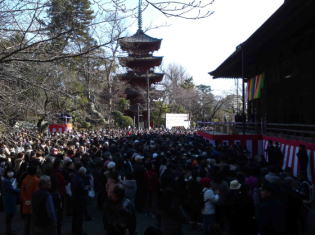
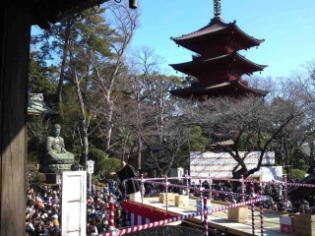
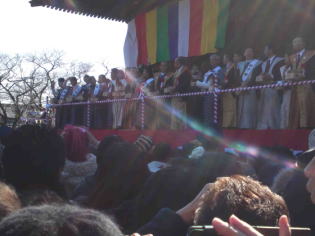
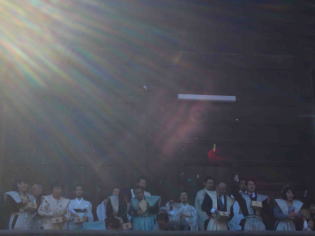
Plum Blossoms in Hokekyo-ji Temple
There are some plum trees on a small hill behind Soshi-do, the plum blossoms are blooming around Hokke-do, Ugajin-do and Yonsoku-mon. The blossoms on the drooping plum trees are very beautiful on their pale pink petals.

Hinamatsuri, the girls festival or the doll festival
There are many Hina-dolls displayed on the corridor connecting the main building and Kishibojin-do.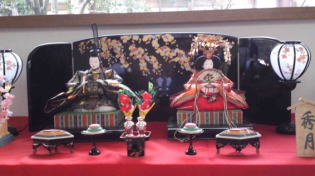
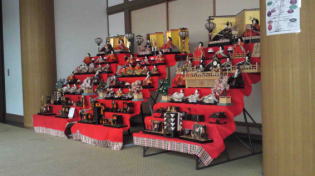
The Cherry Blossoms In Hokekyo-ji
There are about 200 cherry trees in the site of Hokekyo-ji Temple and millions of cherry blossoms bloom from the end of March every year. Passing through the Niomon gate, the cherry trees with the cherry blossoms look like a tunnel of them. The five story pagoda, Gojyu-no-to looks above the pale pink cloud made of the cherry blossoms. Thousands of visitors come during the season.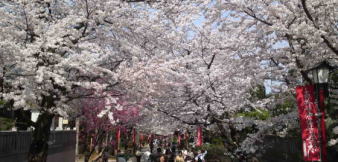
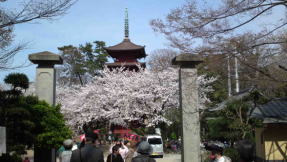
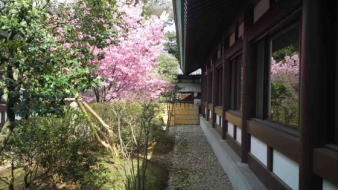

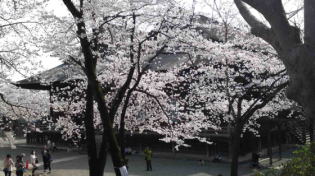
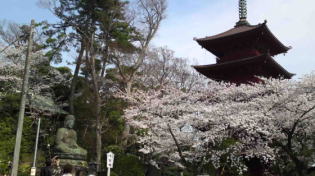
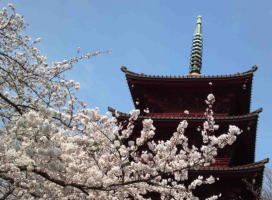
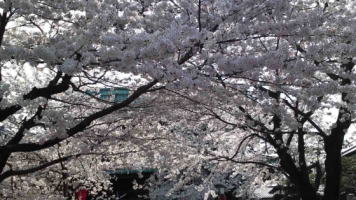
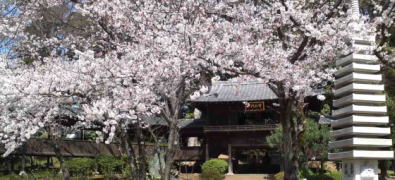

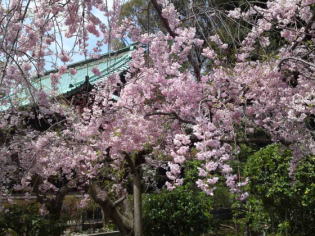
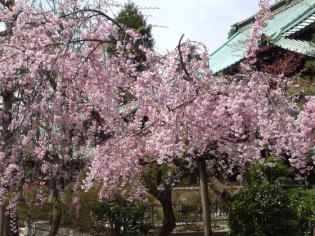
Satsukis, Azaleas, Irises and Peonies in Hokekyo-ji
There are several kinds of flowers blooming in Hokekyo-ji Temple, so many people enjoy taking a walk and viewing the trees and flowers in the temple every seasons.After blooming cherry blossoms, satukis and azaleas start blooming, beside the statue of Nichijo the first chief abbot, a wistaria-trellis stands, and some penies blooms around them. The satukis and azaleas are blooming excitingly beautifully along the ston steps to Ugajin-so.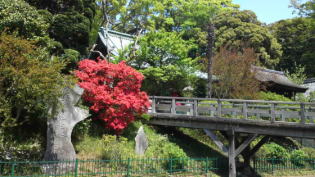

Japanese Hydrangeas in Hokekyo-ji
Ryuoike, named the dragon king's pond had rebuilt about ten yeas ago, now some Japanese hydrangeas bloom on the edg of the pond.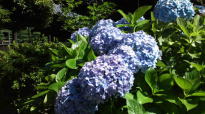
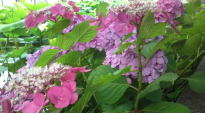

Lotus Flowers In Hokekyo-ji
Ryuoike, the drangon king pond where Hachidai-ryuo-do stands in has hundreds of lotus flowers blooming from mid-July to mid-August. They blow some cool winds to make refresh.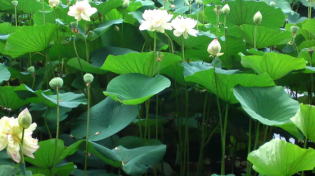
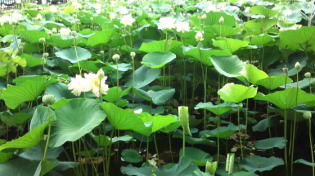
Red Spider Lilies, Fragrant Olives And Other Flowers In Fall
Some autumn flowers bloom quietly in Hokekyo-ji in fall. Red spider lilies bloom under Nio-mon gate and the stone steps to Setsu-do. Winds carried sweet smell of fragrant olives around Ugajin-do. There are some jars where water lilies float.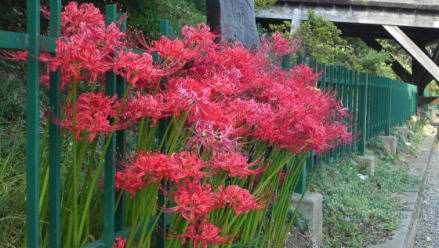
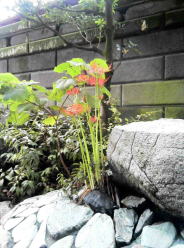
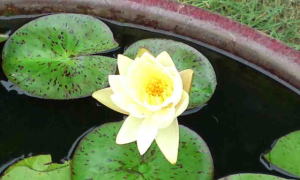
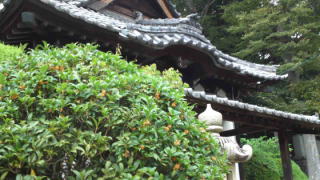
The Colorful Autumn Leaves
In fall, the cherry leaves turning crimson is the beginning, then ginkgo trees change flash yellow figures, and crimson maple leaves decolate the views in Hokekyo-ji.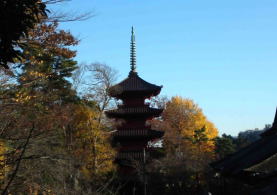
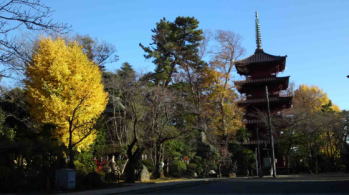
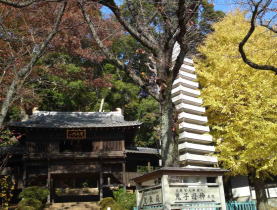

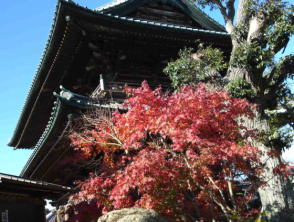
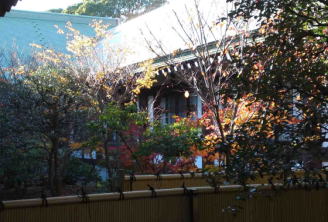
Dai-aragyo-do (The Hall For The Grand Asceticism) Of Nichren Sect
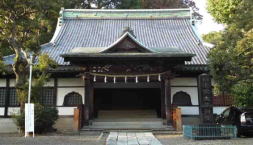
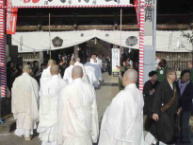
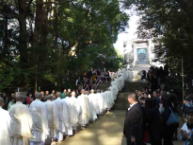
Dai-aragyo-do (The Hall For The Grand Asceticism) Of Nichren Sect In Hokekyo-ji
Every year from November 1st to February 10th, the 100 days asceticism in cold season is held in The Grand Head Temple of Nichiren Sect, Shochuzan Hokekyo-ji Temple at Ichkawa city, Chiba prefecture. This asceticism is very famous, it was said one of the hardest asceticism in Japan.Every year over hundreds of priests gather and practice for 100 days in the cold winter season, it is really very hard and austere discipline.
Neither all priests belonging to Nichiren Sect can enter the discipline, the priests past the rule could only attend the practice. For example, the priests should be healthy. Those priests succeed the skill by word of mouth. It is very hard discipline to learn how to practice healing.
The schedule in a day of the priests practicing the asceticism starts 2:00 am. Then they throw cold water on their own bodies seven times in a day from 3:00 am to 10:00 pm to purify themselves, this is called 'Suigyo'. And they read thousands of Sutras, write the succeeded important Sutras and learn 'Mokken-sosho' a important skill in Nichren Sect. They could eat a cup of plain rice porridge and a pickled plum twice a day.
In February 10th at the day of the celebration for the priests having accomplished the 100 days severe practice, Zui-mon gate had closed 100 days is opened, and thousands of people( the family of the priests, the supporters and followers) meet them to celebrate their accomplishment. Then the celebration for them is held in Soshi-do.
After that, these priests go back to their temples and help their supporters and followers to their wishes fulfillments with the skills and knowledge they learned in the grand asceticism.
参考
日蓮宗大荒行ホームページより
Nakayama Tori-no-ichi (The Cock Fair In Nakayama Hokekyo-ji)
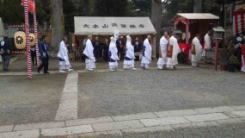
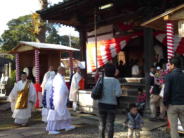
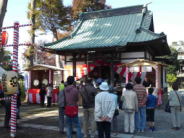
Nakayama-Tori-no-Ichi (The Cock Fair at Nakayama Hokekyo-ji Temple) is held at the Myoken-do next to the Soshi-do in Myouken-Sonsei-Taisai-no-hi, in other words, every Tori-no-hi (The Cock Day) in November. In the Myoken-do, Hokushin-Myoken-Sonsei is dedicated, he is the god of peace in the land, avoiding troubles and helping to get good fortune is introduced by the Chiba Clan one of the powerful family having succeeded the Military Governor of Shimousa (the northern part of Chiba prefectuer) in middle ages.
According to Myoken-Hongu-Chiba-jinja Shrine Engi (the history of the shrine), Myoken had believed faithfully by the Chiba Clan from generation to generation. When the Founder Nichiren visited the Chiba-jinja Shrine and took an oath of developing and flourishing his religious sect, he got an auspicious augury, so he raised his voice in admiration and said 'The Myoken-Son is very the thing that the god protects my sect.' After his wish had been fulfilled, he dedicated the Lotus Sutra with thin letters written by him.
The Washi-Myoken dedicated at The Washi-jinja Shrine and Chokoku-ji Temple came from Hokushin-Myoken, the enshrine deity at the Chiba-jinja Shrine. And alos Yamatotakeru-no-mikoto dedicated at Aidono who became a swan and flew to Hokuten or Myoken's (the northen heaven) in myth. Therefore poeple think that their wishes get to them in Tori-no-hi.
According to Chokoku-ji Temple in Asakusa Tokyo, Myojo (Venus) started to travel and Washi-Myoken-Daibosatsu appeared, the Founder Nichiren had prayed for the peace of the country at Kobayakawa's residnt (there stands Shuzan-ji Temple) in Washizu, Kazusa-no-kuni (Mobara city, Chiba prefecture). The day is the Cock Day in November
If you want to know more about Nakayama Hokekyoji Temple, please see the site 'A Walk in Nakayama Shimousa'.
参考
デジタル大辞林
明鏡国語辞典
ブリタニカ国際大百科
クロニック戦国全史
市川市ホームページ
法華経寺ホームページ
千葉神社ホームページ
鷲在山長國寺ホームページ
The Antique Market In Hokekyo-ji
The antique market is held in Hokekyo-ji every year in mid-November.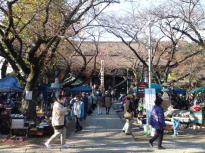
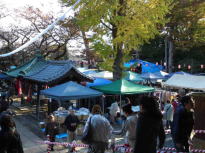
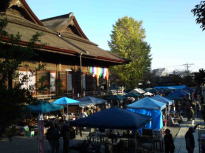
Visit Events, Landmarks and Areas Near Nakayama Hokekyoji Temple
IIchikawa City has very long history and there are a lot of historical assets in the city. Moreover it is very close to the center of Tokyo and Narita International Airport, tourists could easily feel and touch Japanese culture. Why don't you visit Ichikawa City?
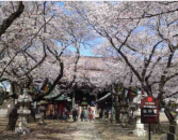
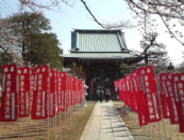
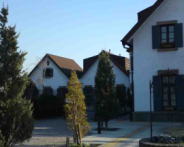
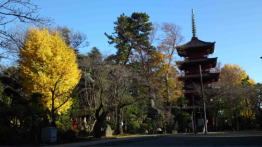
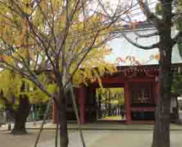
Areas
- Funabashi
- Ichikawa
- Katori
- Narita
- Sakura
- Urayasu
Landmarks and Events
- Nakayama Hokekyoji Temple
- Mamasan Guboji Temple
- Higashiyama Kaii Memorial Hall
- Katsushika Hachimangu Shrine
- Edogawa River Fireworks: Fireworks Display for Residents in the Cool Summer Evening (at the Edogawa River)